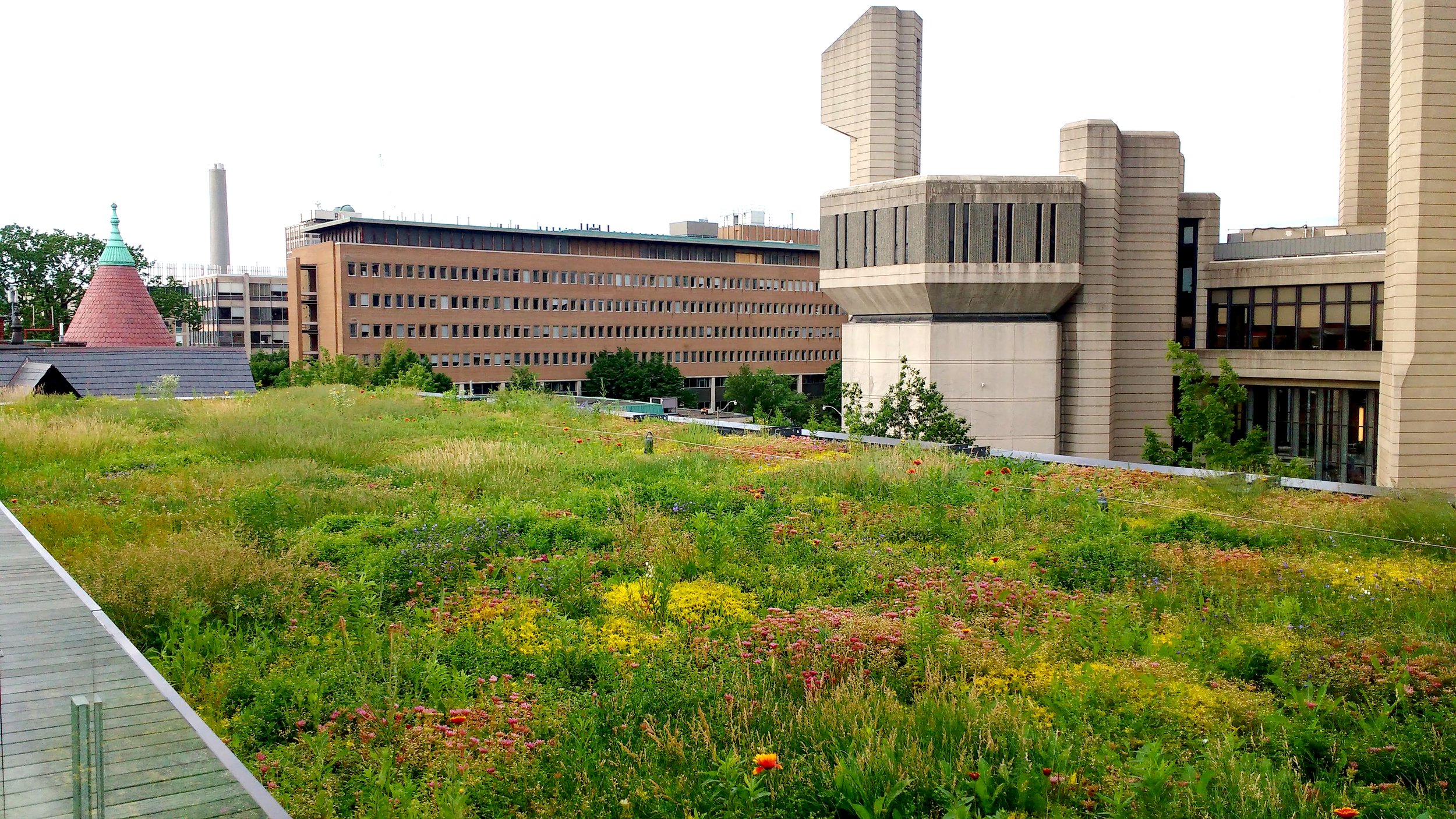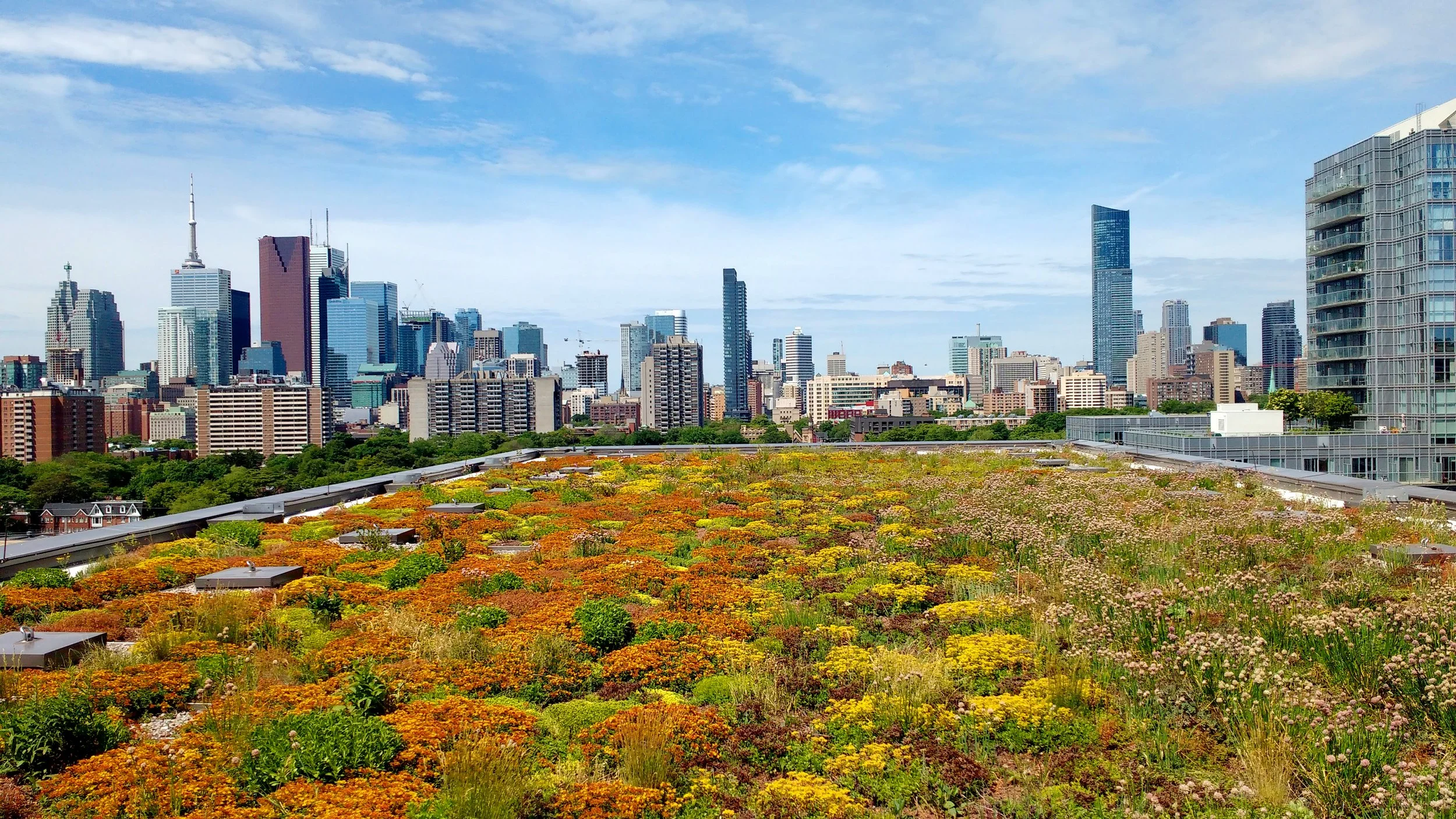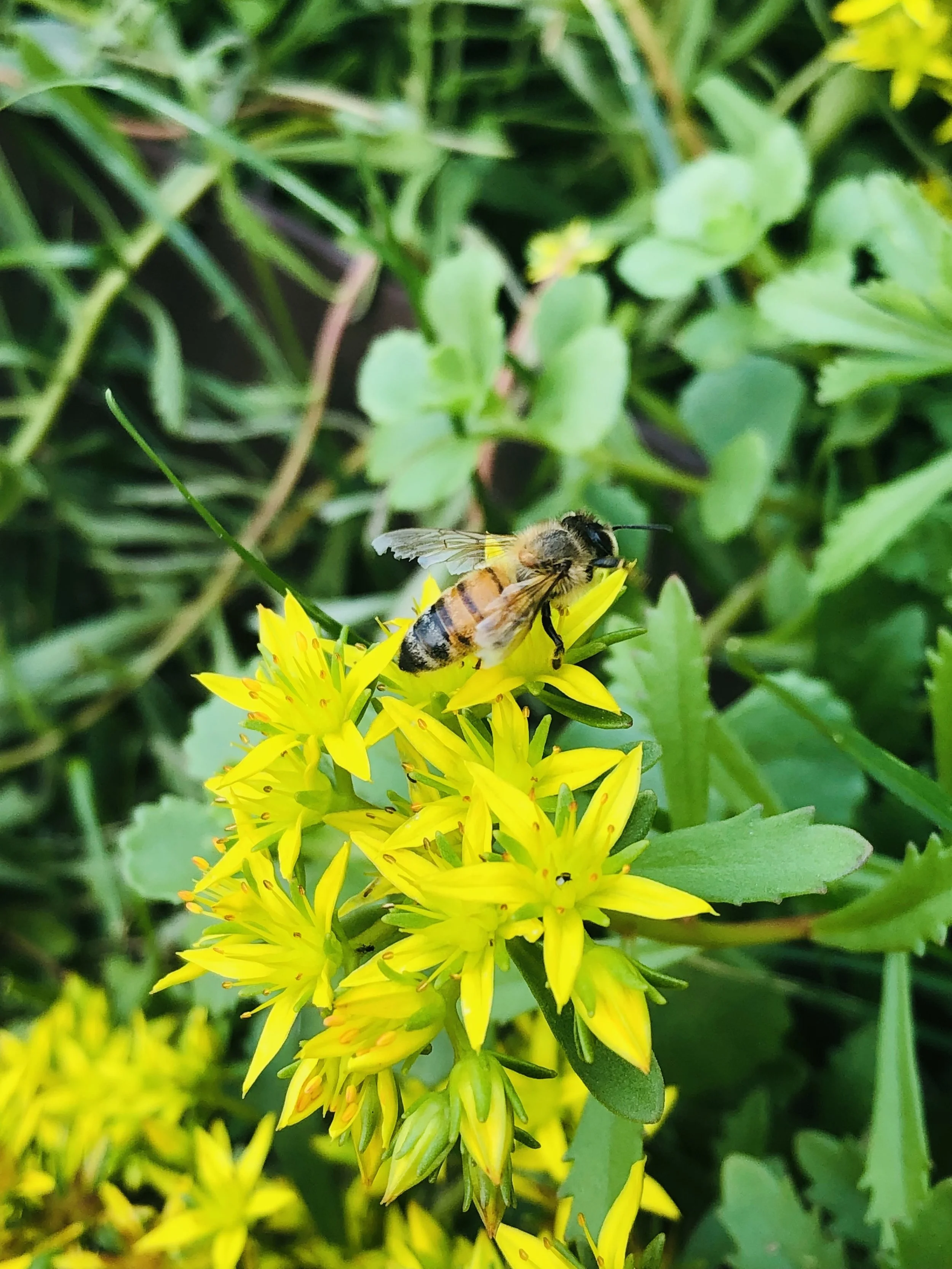Important Spring Maintenance Tips for Northern Green Roofs
Advertisement
The excitement of Spring starts well before the snow has melted away, most especially when one sees and hears the returning hibernating birds at the feeders. It is a good time to start planning, ensuring you get the maintenance season off to a great start and perhaps advanced ordering some new plants.
Green roofs thrive on some basic maintenance. The extent will vary from site to site and from system to system but one in essence needs to keep an eye on these three important items.
Nutrient levels & soil health
Irrigation and water usage
Weeding
A bio-diverse green roof with a sedum base that is now 10+ years old with irrigation, Toronto, ON. Photo: Ginkgo Sustainability
Nutrient levels and soil health are best determined by conducting annual or bi-annual soil tests depending on the age and health of the system. A new green roof that is only a few years old should have sufficient nutrient levels in the growing medium. Testing results may vary somewhat from one laboratory to another. At a minimum one is looking for NPK or Nitrogen, Phosphorus, and Potassium levels and pH although micro-nutrient levels are also beneficial as that gives one the ability to be more precise in targeting any added nutrients and minimizes inputs. Biologically active and healthy soil goes a long way to ensuring your green roof performs well, keeping plants healthy and robust.
A healthy low maintenance sedum and allium green roof with no irrigation now 7+ years old, Toronto, ON. Photo: Ginkgo Sustainability
Green roof irrigation is always a hot topic. Whether a permanent system is necessary or not will be system and location specific. What is crucial is ensuring that if there is a permanent system, it is started up in the spring and functioning properly. This includes ensuring that the irrigation zone(s) for the green roof are set properly. We have often seen integrated systems that cover the totality of a site's landscaping set improperly. Sedums are not grasses for example and have completely different optimal watering cycles / requirements. We log those irrigation settings and try to verify on each visit that they are still set correctly on sites where this could be an issue. For sites where temporary irrigation will or may be used: double check that the hose bibs are still accessible and turned on. When the time comes to use them you know that they will be available.
Getting a spring start to weeding ensures that weed pressure is significantly reduced. Not letting weeds get to seed during spring's optimal growing conditions has a significant impact on the overall intensity of weeding throughout the course of a season. This is because some species can create thousands of weed seeds, that if dispersed, will generate many more weeds to remove later on.
Advertisement
Green roofs can be a haven for various types of bees. Photo: Ginkgo Sustainability
Spring is also a great time to add some new plant material to augment your green roof spaces and add additional habitats for our rapidly declining pollinators and birds. Not only do we want the green roofs to become a safe haven from pesticides and herbicides, we want the green roofs to offer a space for natural diverse ecosystems.
We can create spaces of continual flowering varieties that will tolerate the green roof climate. Some suggestions may be Wild Bergamot, Missouri Primrose, garlic chives, various native species of GoldenRod(Zig-zag, Gray, Upland White, Cliff), Common Cinquefoil and Hairy Beard-tongue.
To further create small ecosystems amongst the pollinating flowers, one could install small pods of various grasses on which the birds could perch and nest. Examples of grasses would be Prairie Brom, a variety of Sedges (Copper-shouldered, Ebony, Pennsylvania), Rocky Mountain Fescue, Sand Dropseed and Little Bluestem.
Watering will be required initially to support root establishment and it is best to incorporate water timers to ensure best usage of water, in early mornings, once or twice per week, for a good soaking. Only water the new plants, the remainder of the roof should remain self-sustaining.
A diverse plant palette, Toronto, ON. Photo: Ginkgo Sustainability.
Chronic over watering for any plants, in any location such as planters, house plants and landscaping or green roofs will create many complications. Healthy non-compacted soil will have many air pockets which are essential spaces new roots grow; when soil is perpetually soaked, these air pockets become anaerobic zones and the roots and soil microorganisms will ultimately suffocate. The plants’ vegetation will turn brown and die eventually. The chronically wet soil will also attract unwanted pathogens and pests such as fungus gnats. The best method to test for good watering practices is to allow the top 1 ½”-2” of growing medium to dry down before watering.
Soil health requires constant vegetative coverage- soil does not like to be bare. By ensuring the empty spaces of soil are infilled with sedum clippings, trios of pollinating flowers and contained pods of various grasses and sedges, the soil health will improve continually within this diversity of roots and affiliated micro-organisms.
Soil health is fundamental to our ecosystems and green roofs and good maintenance practices are essential to achieving this. Happy spring maintenance!
For more information about Maintenance, please visit the Living Architecture Academy and check out our Advanced Maintenance Course.
Advertisement
Christian Mahlstedt is the Founder and President of Ginkgo Sustainability. Ginkgo Sustainability is now a 50 plus person team dedicated to the design, installation, and maintenance of Green Roofs and Living Walls. Christian also sits on the Board for Green Roofs for Healthy Cities, an organization that promotes the economic, social, and environmental benefits of green roofs and walls.
Monique Lee recently joined Ginkgo as Maintenance Operations Manager. With a 15 year history of building and maintaining green roofs and living walls across North America, she is looking forward to a new challenge and applying that experience to leading the maintenance team at Ginkgo. See www.ginkgosustainability.com








